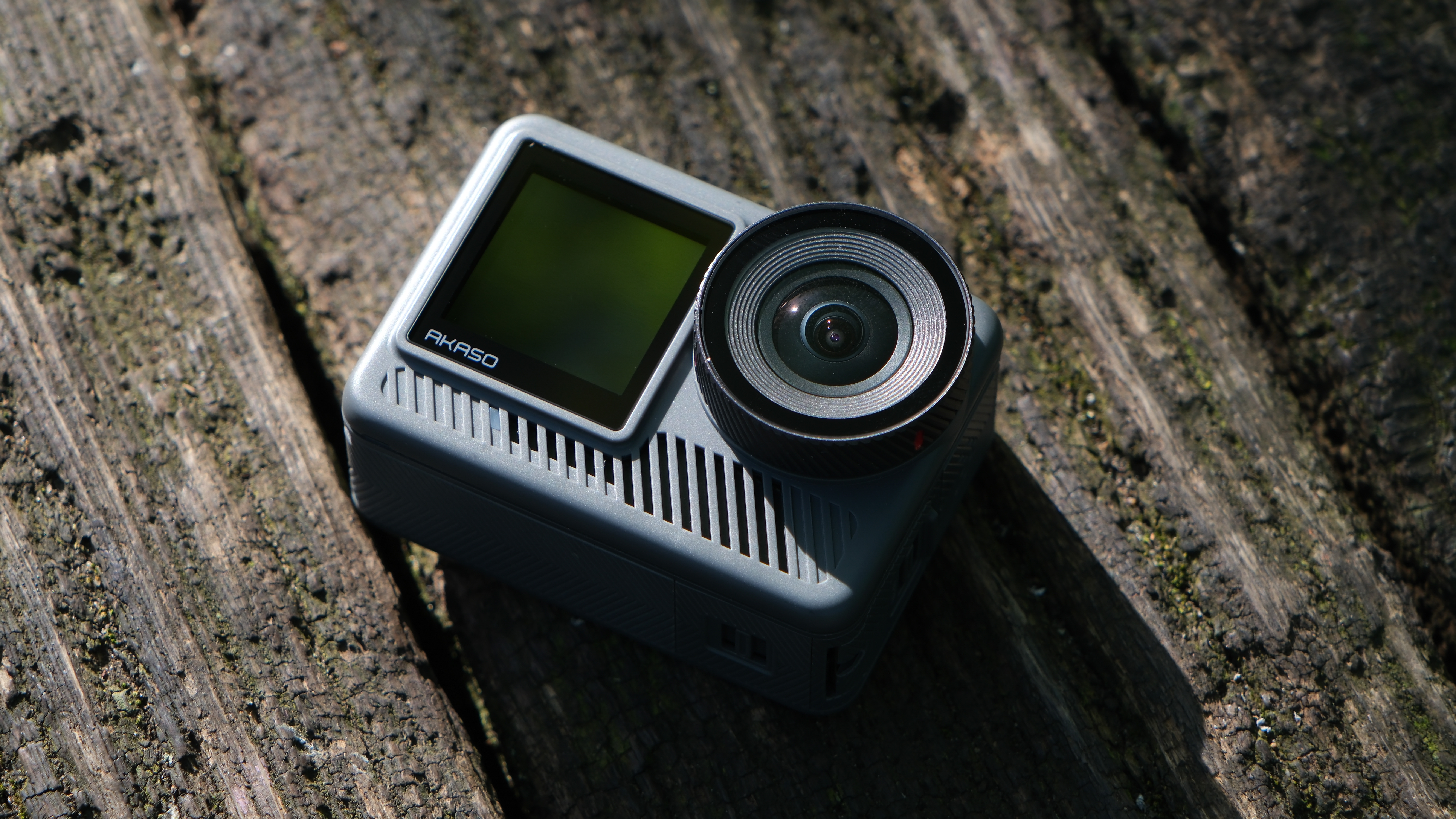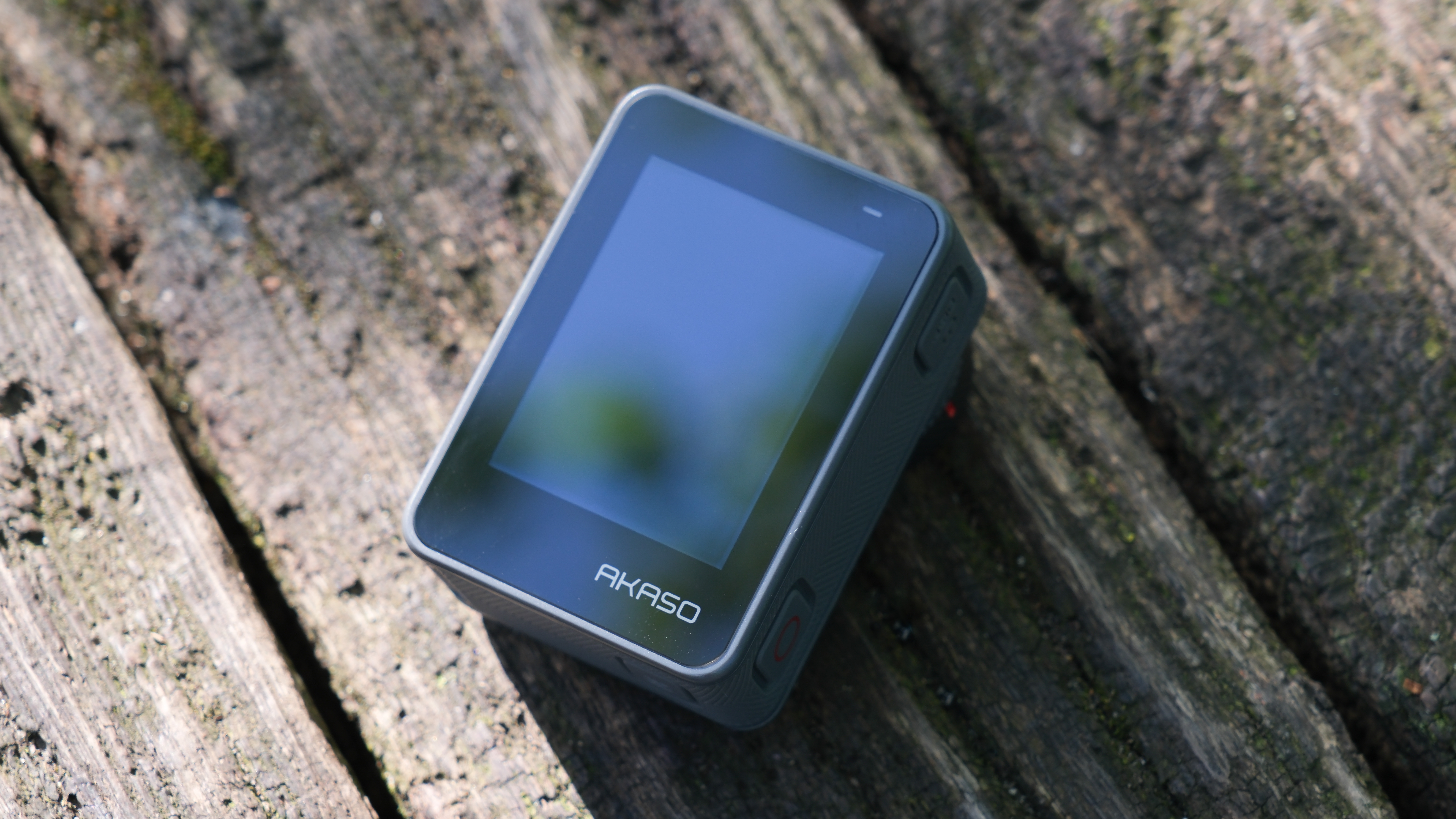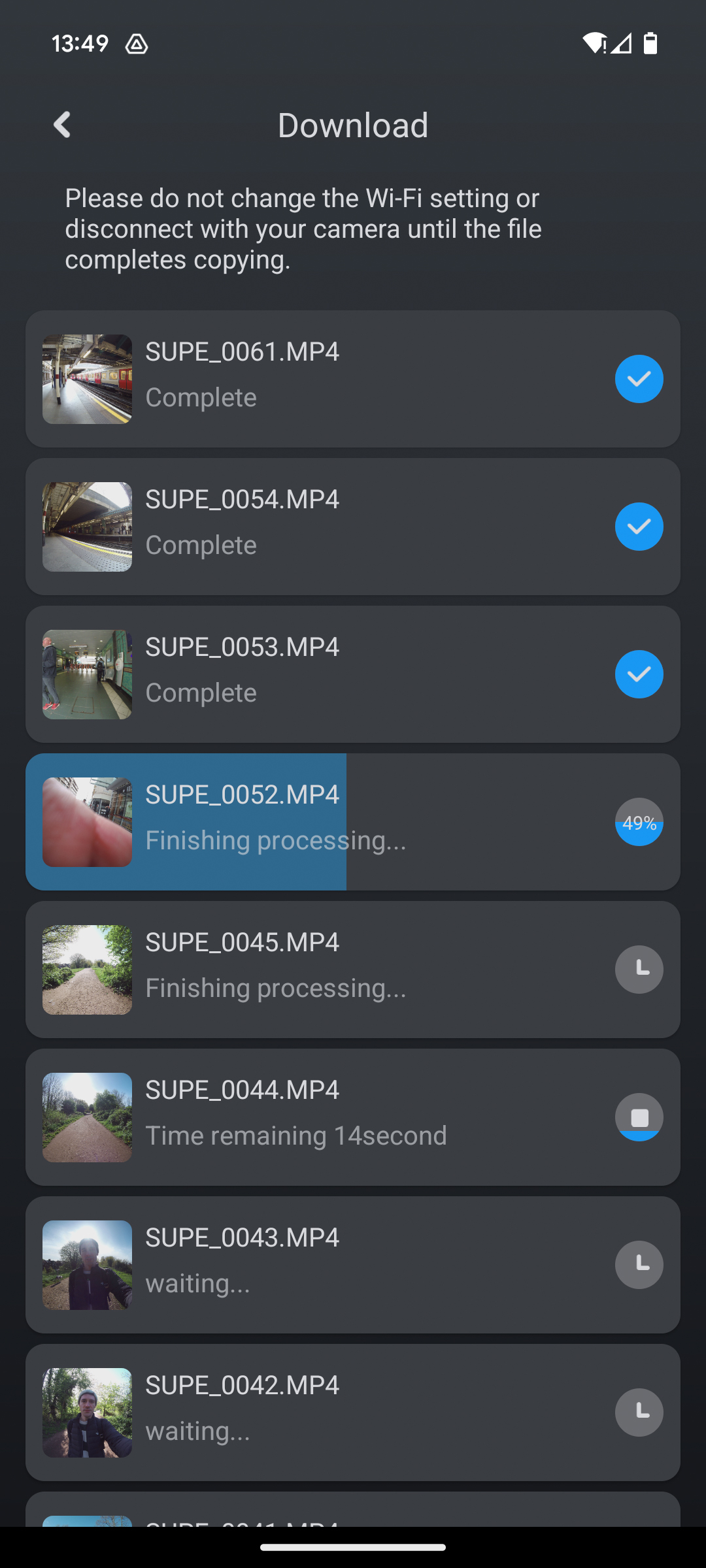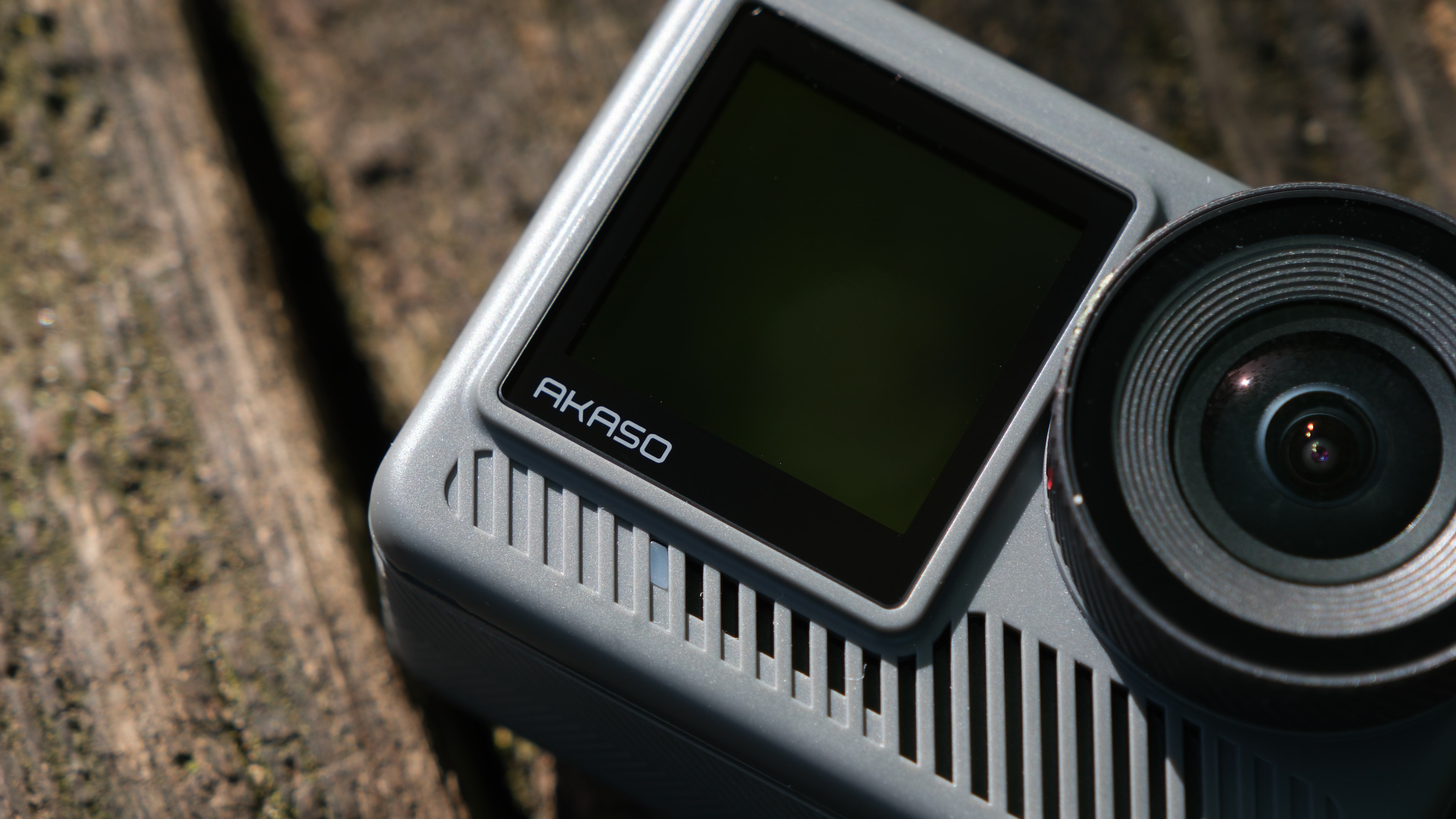Digital Camera World Verdict
Despite its name, the Akaso Brave 8 Lite outshines its counterpart, the Brave 8, offering similar performance at a more reasonable price. Video quality is good in well-lit conditions, though struggles in low light. The SuperSmooth video stabilization works decently, but photo mode has exposure quirks. Overall, it's a worthy contender against GoPro and DJI models at a lower price point.
Pros
- +
Good quality 4K video
- +
Decent SuperSmooth image stabilization
- +
Competitive price
- +
A lot of accessories in the box
Cons
- -
Exposure issues in photos
- -
Disappointing HDR mode
- -
App experience is poor
Why you can trust Digital Camera World
Akaso may not be the first name you think of when it comes to action cameras, with GoPro dominating the genre for years with its excellent Hero cameras, that is until DJI came along to knock it off its perch with its Osmo Actions. But Akaso has been steadily producing some of the best budget action cameras for anyone on a limited budget but still wants a camera that can survive a trip to the beach or flying down a mountainside.
The last generation of Akaso cameras, the Brave 7 LE was one of our favorite budget cameras. With the Brave 8, while initially a good deal, Akaso has since been trounced on price with GoPro and DJI rapidly dropping prices on older models until the Brave 8 became the more expensive option, but one that couldn't compete on quality.
Luckily, with the Brave 8 Lite Akaso is taking a step back to the formula that made its cameras stand out from the crowd, with an impressive specs sheet but a low price that undercuts rivals. But with this competition at this end of the market so fierce, can the Akaso Brave 8 Lite do enough to win back the budget action cam crown?
Akaso Brave 8 Lite: Specifications
| Video Resolution | 4K60/ 4K30 / 2.7K120 / 2.7K90 / 2.7K60 / 2.7K30 / 1440P180/ 1440P120 / 1440P60/ 1440P30/ 1080P120 /1080P60 /1080P30 |
| Photo Resolution | 20MP |
| Video Modes | Video / Time Lapse Video / Slow Motion / Hyperlapse / HDR Video |
| Photo Modes | Photo / Time Lapse Photo |
| Battery Capacity | 1550mAh |
| In the Box | 1 x AKASO Brave 8 Lite Action Camera / 1 x Camera Frame / 1 x Remote Control / 1 x Battery Charger / 2 x 1550mAh Battery / 7 x Mount / 2 x Helmet Mount / 1 x Lens Cloth / 1 x Handlebar Mount / 4 x Bandage / 5 x Tether / 1 x USB Cable / 2 x Double-Sided Adhesive Tape / 1 x Spanner |
Akaso Brave 8 Lite: Price
Where the last release from Akaso, the Brave 8, came a little too close to the price of the GoPro 10 and DJI Osmo Action 3 just while not offering the same level of competence. The Brave 8 Lite manages to shave enough off its price to make you think twice before committing to either of those devices. At $199, this is the same as the new permanent price for the DJI Osmo Action 3, although it is $50 cheaper than the GoPro Hero 10. Although the Brave 8 Lite includes far more in the box than either of its big rivals.
While I am still not sure that the Brave 8 Lite does enough to beat those cameras in terms of image and stabilization, it does give them a closer run for their money. Akaso does like to regularly discount its products on Amazon especially, and a hefty financial saving could have been the coup de grâce that pushed the Brave 8 Lite to the top.
Akaso Brave 8 Lite: Design & Handling
One fantastic thing from the get-go is how many accessories come in the box with the Akaso Brave Lite, including straps, adhesive pads, and mounts for helmets and handlebars. This shows additional value gained over its more expensive rivals that charge, often quite a lot, for simple accessories.
There are also two batteries included, which is a huge bonus for long days of shooting, and another cost benefit over other brands. The Brave 8 Lite batteries can be charged directly in the camera with a USB-C cable, and thankfully the camera can still be used while charging. There is also a USB-C powered double battery charger in the box, although this annoyingly wouldn’t work with USB-C cables of too high a wattage.
The best camera deals, reviews, product advice, and unmissable photography news, direct to your inbox!
We have all seen a lot of action cameras now, and safe to say there is nothing unusual here in terms of design. If you have used a recent Akaso, GoPro, or DJI then you’ll be very familiar with the layout and control scheme. However, the fact that the Brave 8 lite adheres faithfully to this established blueprint is fine, as it is tried-and-tested, and probably doesn't need any innovation.
The camera itself boasts a sturdy rubberized exterior and is waterproof up to 10m (33ft) without additional housing. I am not a scuba diver, so I haven't tested its limits extensively, however submerging the camera to around one meter in a large rain bucket for around an hour had no adverse effects on its functionality.
Overall the camera feels pretty good though, although the quality isn’t quite as good as rivals, but this camera is a fairly low price, so these slight compromises in fit and finish are more acceptable. However, the mounts and included camera cage feel a little cheap.
Akaso provided me with a metal cage for the Brave 8 Lite, which is a much more solid-feeling experience, however, this is an optional extra, with the cage included in the box being a regular plastic construction.
Navigating the controls on the rear touchscreen is relatively intuitive; swiping in from different edges triggers various functions, and the menu options are well-organized and user-friendly. My only complaint is the screen and menus are very sensitive, and I found that while carrying the camera I kept entering unwanted menu screens. You can lock the screen for this very reason, but it's annoying having to lock and unlock frequently.
If you are wearing gloves or can’t really get to the touchscreen, then there are also physical buttons on the camera. These include a one-touch record button for quick video start and stop, a power button that can also switch the display on/off with a quick press, and a mode button on the side for cycling through all recording modes.
However, one annoyance with this button is if you are in any mode beyond the regular video mode in the menu, you have to go through all other 6 other modes to get back to standard video, I wish there was a way to limit this to just quick-switch between video and photo, (or two chosen options) as I only want the other modes very occasionally.
The Brave 8 Lite also comes with a new remote, and I prefer this one to any of Akaso’s previous remotes. Instead of a detached little remote that is very easy to lose when in action, the Brave 8 Lite’s remote is attached to a wrist strap. The remote only has two buttons, but this offers an incredibly quick way to start and stop a video or take a photo. There is no screen on the remote but there is an LED that flashes when the button is pressed, although I wish during video recording this LED would remain lit or continue to flash so I knew the video was still recording.
The remote also charges with USB-C (although again only low-wattage cables), but this makes a huge difference from the frustrating use of micro USB in the last Brave 8. Unfortunately the remote doesn’t detach from the strap though, which would have been the perfect final touch.
App and setup
The Akaso Go app is still the only way to upgrade firmware and download your SuperSmooth video (copying it from the microSD will only give you non-stabilized footage). The app itself is fine to use, it is pretty straightforward to find where everything is, but it won't be winning any design awards.
You can download the app from the Play Store or App Store on iPhone, although the app is confusingly not listed as made by Akaso, which threw me off the first time. The app will also try very hard to make you set up an Akaso account, which will grant you access to the various social features and the video editor built into the app. However, if you’d prefer to keep a hold of your data then you can skip all that and still get access to your Supersmooth video downloads.
Connecting the camera to the app is still a little frustrating on Android, although I was unable to test it on iOS. The camera has its own WiFi network, but the app was unable to switch my phone's WiFi network to the camera’s automatically and I had to manually go into my phone settings, connect to the camera network, and type in the password before it would connect. I don’t really understand why it behaves like this when other smart home devices seem to have no issue switching my phone networks around on demand.
Also as a strange quirk, the Brave 8 Lite gets uncomfortably hot while transferring videos, after around a 20-minute transfer I gave a little start when I picked it up and the front screen and lens glass especially were very warm to the touch. Transferring and processing video does take a little while although not as long as the previous model. For around a 20-minute cycle, it took about 20 minutes to download and process the SuperSmooth video.
Akaso Brave 8 Lite: Performance
Let's start with the best thing about the Brave 8 Lite, which is its overall video quality. I found the 4K video to be sharp and clear, with consistent and accurate colors and white balance. I found that the camera struggled slightly on occasion when it came to more complex exposures, often overexposing light areas like my face or the sky in an effort to not underexpose the shadows.
I was excited to see the HDR (high dynamic range) mode in action, but in my tests, it was less HDR, and more just cranking up the exposure and shadows until everything looked a little too bright, and honestly, I think the standard video mode had better HDR proficiency.
Low light performance is nothing special, but not bad, the sensor is still smaller than that on rivals, although I am assuming Akaso has made the pixels larger than on the Brave 8, with 20-megapixels on a 1/2.2” sensor on the 8 Lite vs 48-megapixels on a 1/2” sensor on the 8. Whether it is this megapixel size or just improved algorithms, it is better in poorly lit environments than the Brave 8 and in close competition with the GoPro Hero 10, although can’t quite match the low light specialist with the Osmo.
Akaso has its own Supersmooth algorithms that can be applied in the app when downloading videos. Firstly, I will say that SuperSmooth video is head and shoulders above any video without stabilization and unless you have specific reasoning I would download every video with it applied.
After using the Brave 8 recently, I think Aksaso has managed to make some quality improvements to its SuperSmooth video with the Brave 8 Lite. However, while Akaso’s Supersmooth is very good, I don’t think it is quite up to the very high standards set by other brands' cameras and their gimbal-like quality.
Certain movements fared much better than others. I was very impressed by the camera while walking and running, where my movements were much heavier, more exaggerated, and I think more trackable/predictable by the algorithm. However, when cycling on London’s not perfectly maintained roads on a hard road bike vibrations and bumps can still be seen in the final Supersmoothed footage.
The Brave 8 Lite has picked up a new trick with wind noise reduction, which should reduce the noise of wind rushing through the microphones at high speeds – except it doesn't. When cycling around with wind noise reduction mode on, wind noise is still very audible and drowns out the other sounds of the road. The microphones in general are just not the best, and when walking around recording to-camera, my voice sounded small and compressed.
Photos from the Brave 8 Lite are fine, although are easily beaten by almost any modern camera phone. Like video, the Brave 8 Lite struggled again with exposure, with a lot of my images taken outside in the middle of the day in even light coming out very dark. There are several metering modes, although I used the standard average metering mode out of the box.
When exposure is nailed though, image quality is okay from the 20MP sensor, and actually low light performance isn't bad, with some photos of London's gloomy underground coming out as usable.




Akaso Brave 8 Lite: Verdict
Despite its name sounding like it is a watered-down version of the Akaso Brave 8, the Brave 8 Lite is actually the better proposition. Both offer very similar performance to one another, but the Brave 8 Lite does so at a much more acceptable price point.
Video from the Brave 8 Lite is good quality, 4K looks like 4K when shot in a well-lit environment, although the camera does struggle slightly more in varied or low-light conditions. Akaso's SuperSmooth video algorithms are decent enough at steadying shaky footage when movement is pronounced, although still aren't quite as strong as rivals. The photo mode was good, although with some odd exposure quirks, but hopefully, that can be fixed with a future update.
Overall, the Brave 8 Lite does just enough for a low enough price that it should remain a consideration alongside the similarly priced models from GoPro and DJI, even if it can't outright beat those last-generation cameras.
| Features | 4K60p video is plenty, and there are a range of photo and video modes | ★★★★ |
| Design | Rubberized exterior for grip and well waterproofed, but quality could be better | ★★★ |
| Performance | Standard 4K video in good light is excellent, but photos and other modes had a few issues | ★★★ |
| Value | Good quality video, and so many accessories in the box for a bargain price | ★★★★★ |
✅ Buy this if...
- If you want good quality 4K video for your adventures at a bargain price then the Brave 8 Lite delivers clean footage in good light
- If you need a range of mounts and accessories for different activities then there is so much included in the box
🚫 Don't buy this if...
- If you want the best video quality possible from an action camera then there are better but more expensive options
- If you are looking for the best image stabilization, the Brave 8 Lite can't quite keep up with rivals
Alternatives
DJI Osmo Action 3
At a new low price undercutting GoPro and meeting the cost of the Brave 8 Lite, the Action 3 is fantastic value with solid image stabilization and good video quality. While the Akaso comes closer than before, the bigger sensor in the Action 3 performs better in low light, and the app experience is slicker.
GoPro Hero 10
The Hero 10 is still the budget action camera to beat, although the Akaso Brave 8 Lite gives it a run for its money, but the GoPro is still my first choice of video quality and colors. However, the camera is pricier, as are its accessories!

Gareth is a photographer based in London, working as a freelance photographer and videographer for the past several years, having the privilege to shoot for some household names. With work focusing on fashion, portrait and lifestyle content creation, he has developed a range of skills covering everything from editorial shoots to social media videos. Outside of work, he has a personal passion for travel and nature photography, with a devotion to sustainability and environmental causes.












